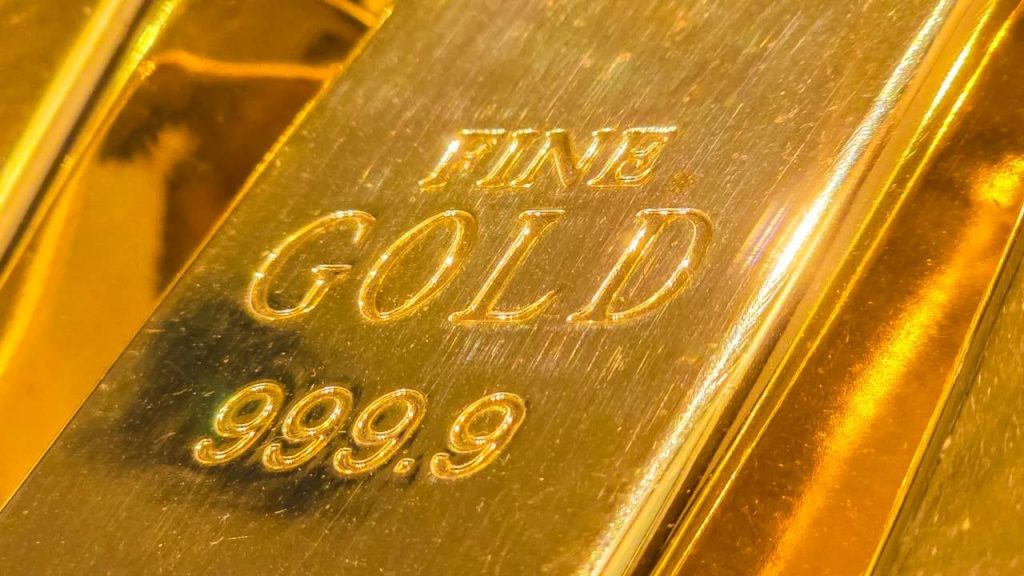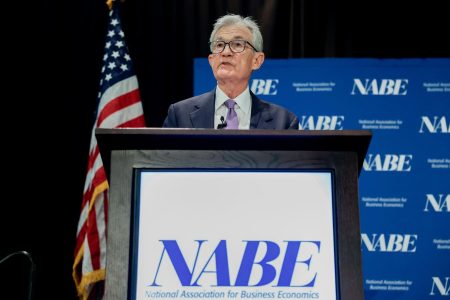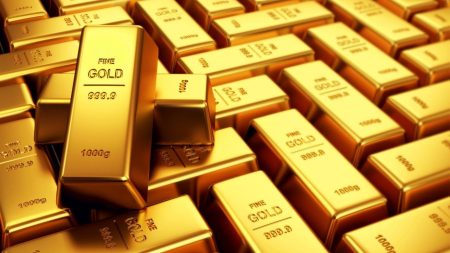Gold has long been a popular way to invest, and the shiny yellow metal has delivered periods of attractive returns, especially during times of economic stress. Gold’s ability to act as a store of value is well known, but it’s also gone through periods — even decades — where the price has fallen.
Still, gold has retained its luster for a segment of investors who like its moderate returns, its defensiveness and its low correlation to the performance of other assets. These qualities give gold the ability to diversify an investment portfolio, reducing its volatility and its riskiness.
Gold has had periods where its performance has been excellent, outperforming key benchmarks like the Standard & Poor’s 500 stock index and posting strong returns in the 1970s and in 2020-2025. But other times a dismal showing has stretched for many years. The period from 1980 to 2000 saw the price of gold stagnate, though there were occasions where it rose briefly.
The price of gold was fixed under the gold standard for many years, so a chart shows prices flatlining for long periods of time, until the price of gold was periodically adjusted. But that changed for the U.S. in August 1971, when U.S. President Richard Nixon canceled the convertibility of the U.S. dollar into gold, allowing the price of gold to float freely on the market.
Gold is well known as a defensive investment, and its price rises when investors anticipate economic hardship or even crisis ahead. So the price of gold may be something of a bellwether for the economy, or at least express the negative sentiments of some investors.
Gold price since 1915
Since 1915, the price of gold has been “up and to the right,” but not without plenty of ups and downs along the way. But as the first half of the chart above shows, there weren’t many ups and downs between 1915 and 1971, as gold was convertible at a fixed rate into fiat currency.
For example, from 1915 to the early 1930s, gold was priced around $20 per ounce. Then in the mid-1930s, gold was priced at $35, which was effectively its reference price for three more decades.
The U.S. left the gold standard in April 1933, when newly elected President Franklin Roosevelt formally suspended the standard. However, the establishment of the Bretton Woods monetary system in the 1940s brought back a limited form of the standard. As part of that agreement, the U.S. dollar was set up as the world’s reserve currency and countries settled their accounts in dollars. At the same time, the U.S. agreed to convert dollars to gold at a fixed rate of $35.
In August 1971, President Nixon officially ended the convertibility of the dollar into gold, and gold began to trade at market-determined prices. Following this event, the world’s major economies eventually moved to fiat currencies that freely floated on international exchanges.
Gold prices in the 1970s
The Nixon shock of August 1971 — including ending the convertibility of the dollar into gold and instituting freezes on prices and wages — helped kick off what was a tumultuous decade for the economy, but a very good one for gold investors. Oil crises in 1973 and 1979 also helped put their own economic strains on the U.S. It wasn’t long after Nixon ended the dollar’s convertibility that gold prices began to boom. Prices zoomed into the high $40s by early 1972, then approached $70 by midyear — effectively doubling from just a year prior.
By late 1973, the U.S. was entering a recession, and while the slowdown nominally lasted until early 1975, the stagflationary effects — a period of low growth in output and high inflation — characterized the decade. It seemed like a ripe climate, then, for gold investors. Prices zoomed.
From around $70 in mid-1972, gold had climbed to north of $120 by May 1973. While it pulled back some toward the end of the year, it roared higher in December 1973 and then shot ahead to more than $170 in February 1974. Amid the rough economy of 1974, gold pulled back a little bit, but by the end of the year, it was threatening to hit $200.
The feverish run ended in 1975 as the U.S. economy emerged from recession. Gold spent 1975 and most of 1976 in a downturn, trending lower, except for an uptick at the end of 1976. However, 1977 and 1978 saw gold make a decided run higher, powering definitively through the $200 level in late 1978.
Further economic stress such as the 1979 oil crisis helped roil investors, and gold skyrocketed. Starting the year at $233, the price of the precious metal spent the year melting up, pushing through $300 in July. By October, gold had climbed above $400, then $500 by November, eventually hitting $600 by New Year’s Day 1980.
From an official price of $35 at the start of the 1970s to more than $600 as the decade ended, gold had a phenomenal decade. But the next 20 years were not nearly so kind to gold bulls.
Gold prices in the 1980s-1990s
The 1980s and 1990s were more or less a wash for gold investors who bought to hold their investment. From start to finish, the price of gold was less than half of what it had been, meaning long-term, buy-and-hold investors saw huge losses. Worse, they missed out on the massive run in stocks throughout the 1980s, and in particular, through most of the 1990s.
While the 1980s started out rough, with twin recessions that saw the Fed raise interest rates into the double digits to choke off inflation, the economy got back on track in this decade. That led to a strong bull market in stocks, which was a huge draw for investors and traders. Although gold may have had a few rallies in the decade — running from around $300 up to $500 — they were short-lived and upward momentum was capped, as stocks offered a high level of returns.
The 1990s held in store more of the same, if not worse, for gold bulls. Gold never sustained a price of $400 for any length of time, and the growing economy — powered by the burgeoning technology of the internet — promised untold riches in stocks. Stocks were the place to be, and the price of gold spent the last few years — the critical years of the dot-com bubble — stagnant or falling.
Gold prices in the 2000s
After two decades in which the price of gold was just half of what it started the period at, the 2000s kicked off a stretch of sharply rising gold prices. The early 2000s reeled from the hangover of the dot-com bubble, as billions of dollars simply evaporated from stock prices and companies with no business model disappeared. Even the well-run companies and those that were destined for bigger things — such as Amazon and Microsoft — saw huge hits to their shares.
As the U.S. emerged from the recession, investors turned their sights to stocks and housing. Gold marched higher throughout the decade as well, especially as the turbulence caused by the bust of the housing bubble began to ripple out. Gold offered the promise of safety and a store of value in tough times to investors haunted by two massive bubbles less than a decade apart.
As the global financial crisis reached some of its worst points in late 2008 and 2009, gold went on to record new all-time highs. With the financial system in tatters and many investors unsure whom or what to trust — the crimes of legendary conman Bernie Madoff were revealed in late 2008 — gold seemed to offer a safe haven with a good record, but the 2010s proved a mixed decade.
Gold prices from 2010-2025
After a strong run in the 2000s, gold continued its momentum into the 2010s. While the very worst of the economic carnage was past, the economy improved only slowly. While stocks rose early in the decade, thanks in part to the Federal Reserve’s policy of near-zero interest rates, the real economy — the one consumers felt day to day — was slow to normalize. Home prices were still way down from their peak of five or six years before, but gold continued to melt up.
By late 2012, investors in gold had had a nice run of more than a dozen years. While gold had entered the year 2000 at less than $300 an ounce, it entered 2010 at nearly $1,100. Then it popped to more than $1,800 in August 2011 before pulling back, and then challenged those highs in 2012. That was the high-water mark for the metal for the rest of the decade. Gold prices receded for years, and they wouldn’t reach their previous high until mid-2020.
In early 2020, COVID-19 reared its head and began affecting worldwide economies. To fight its economic effects, the U.S. government issued stimulus checks and the Federal Reserve moved interest rates to near-zero overnight, helping keep money moving through the financial system. As a result, asset prices zoomed higher in 2020 and 2021, including the price of gold.
Gold traded between $1,750 and $2,000 for most of late 2020 through 2022. While the Fed raised interest rates to combat inflation at multi-decade highs, the price of stocks plunged throughout most of the year, though gold didn’t seem to feel much effect. Even when gold weakened later in 2022, dipping into the $1,600s, it soon bounced higher and started 2023 at more than $1,900 per ounce. Then it spent most of 2023 flirting with $2,000, before finally bursting through the level late in the year. This move set up a strong base to bound higher.
Spiraling U.S. budget deficits helped catalyze gold further. COVID-era spending ran high, and traders turned to assets that might act like inflation hedges, including cryptocurrencies such as Bitcoin and gold, both of which kicked off massive bull runs as the Fed hit the pause button of hiking interest rates any further. The more likely next direction of interest rates: down.
Gold bulls had a phenomenal run from the start of 2024. Gold entered the year at just over $2,000, and just seemed to race higher, seemingly setting a new high month after month. By February 2025, gold had risen more than 50 percent from its price just 14 months before. But it continued to rally, setting new records all the time and opening July 2025 at $3,372.
Continued concerns over spiraling U.S. government debt and economic stresses may keep gold topmost in traders’ minds as they consider safe investments, especially if the economy weakens in 2025.
Editorial Disclaimer: All investors are advised to conduct their own independent research into investment strategies before making an investment decision. In addition, investors are advised that past investment product performance is no guarantee of future price appreciation.
Why we ask for feedback
Your feedback helps us improve our content and services. It takes less than a minute to
complete.
Your responses are anonymous and will only be used for improving our website.
Help us improve our content
Read the full article here









